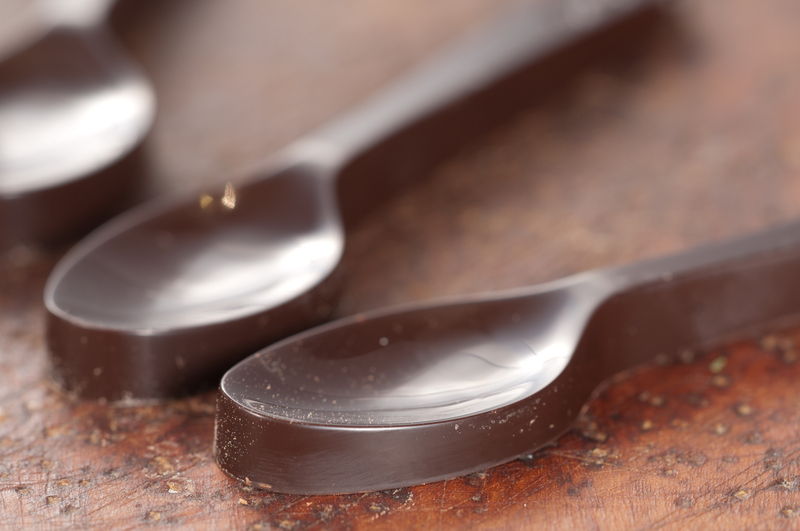Simplified Plant Pot Disposal for Gardeners: The Ultimate Guide
Plant pots are essential tools for every gardener. However, the process of disposing of old, broken, or unused pots can be confusing and often overlooked. With issues like environmental pollution and waste management on the rise, it is essential to understand how to simplify plant pot disposal. This comprehensive guide will help gardeners handle their plant pots responsibly, sustainably, and efficiently.

Why Proper Plant Pot Disposal Matters
Most gardeners accumulate a collection of plastic, ceramic, clay, or biodegradable pots over the years. Without proper disposal practices, these items can become environmental hazards, especially plastic pots, which can take hundreds of years to decompose. Proper disposal methods not only reduce your environmental footprint but also help you reclaim space and keep your garden organized and clutter-free.
- Reduces landfill waste, promoting a greener planet.
- Minimizes garden clutter, increasing safety and aesthetics.
- Encourages upcycling and recycling, giving old pots new life.
Types of Plant Pots and Their Disposal Challenges
Plant pots come in a variety of materials, each with specific disposal challenges and opportunities. Understanding these distinctions is crucial for simplifying plant pot disposal for all gardeners.
Plastic Plant Pots Disposal
Plastic pots are the most common and pose the greatest environmental challenge. While they are lightweight and durable, many municipal recycling programs don't accept them due to contamination from soil and their size or type of plastic used.
- Check local recycling rules for rigid plastics and garden containers.
- Remove all soil and labels before recycling.
- Consider reusing or donating before recycling.
Ceramic and Clay Pot Disposal
Ceramic and clay pots are primarily made from natural materials, but their disposal can be tricky. Broken ceramic is not accepted in most curbside programs and can cause injuries if simply thrown away.
- Break into small pieces and use as garden drainage material.
- Repurpose in mosaic art or landscaping projects.
- Dispose of intact pots at local reuse centers or donation spots.
Biodegradable and Compostable Pots
These pots, made from materials like coir, peat, or recycled paper, are gardener favorites for their sustainability. Their disposal is straightforward, but there are still best practices to follow.
- Place directly in compost bins or garden beds.
- Ensure pots are chemical-free and do not contain synthetic binders.
- Shred or break into smaller pieces to speed up decomposition.
Simplified Step-by-Step Plant Pot Disposal Methods
1. Survey and Sort Your Plant Pots
The first step to simplifying plant pot disposal is to gather and categorize all unused or broken pots. Allocate them as follows:
- Reusable pots: Upgrade, clean, and reuse in your own garden or donate.
- Broken or damaged pots: Identify whether they can be recycled, upcycled, or require special handling.
- Compostable pots: Prepare for garden or compost bin integration.
2. Cleaning and Preparing for Disposal
Before any further action, wash thoroughly all plant pots to remove soil, pests, or plant residues. This is crucial for:
- Preventing cross-contamination when pots are recycled or reused.
- Ensuring eligibility for recycling programs or plant nurseries' pot take-back schemes.
3. Recycling Plant Pots
Many areas now offer programs specifically for plant pot recycling. Search for the following options:
- Local garden centers with popular plastic pot return schemes.
- Municipal recycling drop-off centers that accept #5 plastics or rigid containers.
- Community recycling events or nonprofit reuse organizations.
4. Reusing and Donating Plant Pots
*Reusing* is often the simplest and most sustainable way to part with plant pots. Consider these ideas:
- Offer excess pots to community gardens, schools, or local plant swaps.
- Use containers for seed-starting, dividing plants, or storing garden tools.
- Transform larger pots into decorative storage or DIY garden features.
5. Upcycling and Creative Repurposing
Turn your old pots into functional or artistic items around your home or garden. Here's how:
- Create bird baths, fairy gardens, or vertical planters using stacked or embedded pots.
- Break ceramic or clay pots to use as drainage in new containers or mosaic stepping stones.
- Attach small pots to fences or walls for growing herbs, succulents, or flowers.
The Environmental Impact of Thoughtful Plant Pot Disposal
By making informed disposal choices, gardeners can dramatically reduce plastic waste and conserve natural resources. Eco-friendly habits like pot reuse, recycling, and upcycling not only keep materials in circulation but also inspire others in your gardening community to adopt environmental stewardship.
- Recycling just 10 pounds of plastic pots can save 16-20 kWh energy compared to landfill disposal.
- Upcycling ceramic shards enhances soil drainage and beautifies garden spaces.
- Composting biodegradable pots returns nutrients to the soil, supporting healthier plants.
Tips to Reduce Future Plant Pot Waste
Minimizing waste starts with smarter purchasing decisions and conscious gardening practices. To maintain simplified plant pot disposal in the future, try these tips:
- Buy plants in biodegradable pots or request them at garden centers.
- Choose high-quality containers that last multiple seasons.
- Store excess pots neatly and reuse wherever possible.
- Opt for refillable seed trays and propagation systems made of durable materials.
- Organize annual pot exchanges within your gardening network.
Common Mistakes Gardeners Make With Plant Pot Disposal
- Throwing plastic pots in regular curbside recycling (many recycling systems cannot process these).
- Sending ceramic or glass pots to landfill (could be safely reused or upcycled).
- Burning biodegradable pots (releases unnecessary pollutants--compost instead).
- Neglecting to clean pots before donation or recycling (spreads pests or diseases).

Frequently Asked Questions on Simplified Plant Pot Disposal
Can all plastic plant pots be recycled?
No. Many recycling programs don't accept certain plastics or containers with soil. Check for resin codes and confirm with your local facility.
What should I do with pots that can't be recycled?
*Neutral-colored ceramics or unglazed clay pots* can be safely integrated as drainage in garden beds or repurposed in landscaping. Plastics that can't be recycled should be reused or donated when possible. Otherwise, dispose of according to municipal guidelines.
Are there any organizations that collect plant pots for reuse?
Yes! Many garden centers, nurseries, and community gardens have designated drop-off bins for plastic or sturdy pots. Nonprofits focusing on urban agriculture or community beautification projects also welcome pot donations.
How do I prepare pots for recycling or donation?
*Remove all soil, plant debris, and labels.* Clean thoroughly with a mild disinfectant to prevent pest or disease transmission.
Conclusion: Make Plant Pot Disposal Simple and Sustainable
Taking a thoughtful, eco-friendly approach to plant pot disposal benefits your garden, your home, and your community. By understanding the disposal options for each type of pot, preparing them correctly, and favoring reuse or upcycling wherever possible, you can keep your gardening both green and organized. Encourage others to adopt these practices and together create a more sustainable gardening culture for years to come.
Start Today: Take the First Step Toward Simplified Plant Pot Disposal!
- Survey your garden shed or storage area for unused pots.
- Sort, clean, and decide on the most sustainable disposal or reuse method.
- Share this guide with fellow gardeners to spread awareness and inspire responsible action.
With these strategies, every gardener--from novice to experienced green thumb--can master the art of simplified plant pot disposal for a cleaner, greener, and more efficient gardening experience.